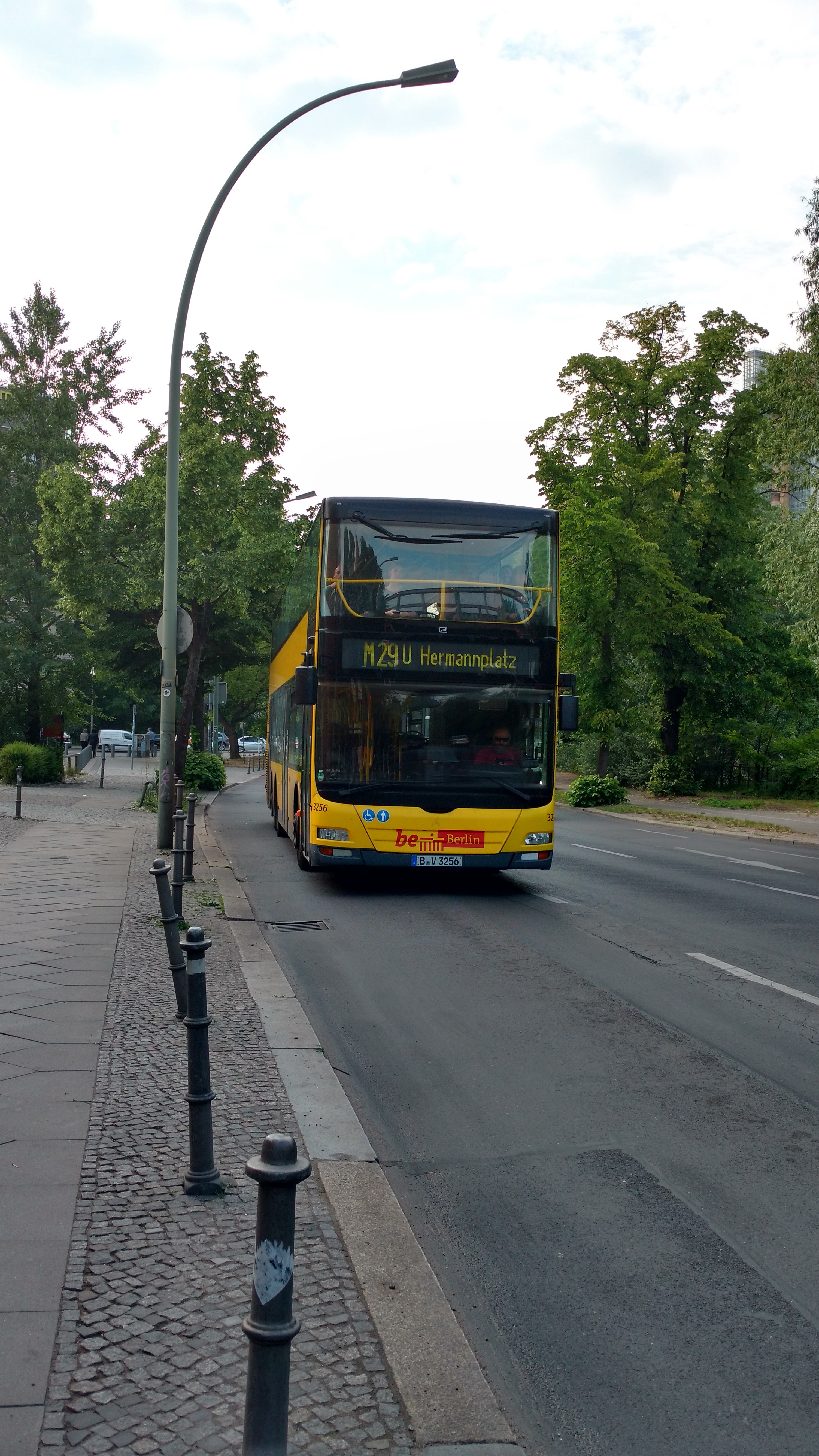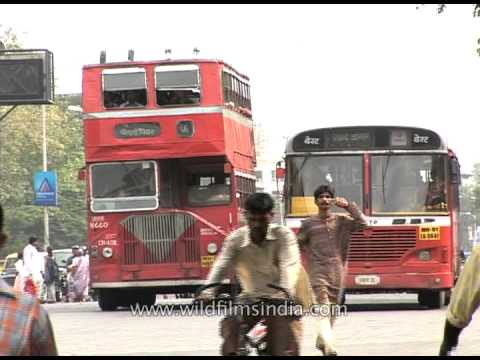
Couple of weeks back, I travelled to Berlin for a weekend trip. The first sight I saw rekindled my childhood memories- a double decker bus. Yes, there are double decker buses, even in Dortmund, which ferry tourists on a city sightseeing tour. However double decker buses for public transport- well, that is a rare sight altogether. And Berlin had lots and lots of them. And I come from a city where double decker buses were part of my growing up. Red double decker buses, one of the innumerable things that makes Bombay my Gotham.
My earliest memory of double decker buses, though, is a fake one, an imagined memory. It is that of my brother with his usual perceptive observation as a toddler calling a double decker bus at the Ems Metal junction in Charkop as an Aa- Bus (whereas normal single decker buses were Ee- bus for him. The Aa denoting the half open jaw whereas the  )
)
Ee bus denoted the horizontal radiator grills on the single deckers). It was an imagined one because this story was narrated to us by our parents while reading out from the handbook that recorded our first words.
When we were growing up, double deckers were quite common- the 286 which linked Charkop to Kandivli Station and the 244 which linked Charkop to Borivali Station were, by default, double deckers. Like many other things, double deckers set Bombay apart from the other Indian cities in the 90’s. And there were quirky sights associated with them. Be it the annual routine of cutting away hanging branches in an open double decker to seeing them make the 180 turn at the Charkop village circle, or the bell system which relayed from the upper deck to the driver or that oft repeated scene in Bombay movies- the hero running after the bus and boarding the large platform of the double decker.
While we normally preferred taking auto-rickshaws while traveling together as a family, traveling to Borivali Station was synonymous with 244. And traveling to Borivali Station with dad was synonymous with new clothes from the Goyal Shopping centre, restaurant food, balloons and toys. The ride back home on the upper deck with the air blowing in your face is something that I and my brother always enjoyed. Occasionally, we missed our alighting stop at Jai Ganga, as sometimes the upper deck conductor forgot to announce the stop. The memory of walking back home pointing out my friends’ apartments and my old school can easily ward off Dementors.
And then with dad’s passing away and our moving to a place which was far from school, the 244 became one of the buses for commuting to school. From being chaperoned to school by dad for a 5 minute walk in happier times to using the public transport and looking after my younger brother, it represented a rite of passage. We have all heard of that famous Bombay cliche- that in Bombay, we form train friends. I never had train friends for I never traveled regularly in trains, eschewing them for buses. But I did form a new set of friends- bus friends, my classmates with whom I shared our rides to school. And during those days, we probably learnt our first lessons in cost benefit analysis- the comfort of seating in the double decker 244 versus the proximity of the single decker at the school gate.
And then during the summer holidays after ninth grade, the 244 became me and my friend’s ride to the coaching classes at Borivali Station. And we used to race to get to the top, to get the front row seats to experience the mildly cool yet strong draught that would blow through the open front windows, providing relief during the sweltering Bombay summer.
Slowly, double decker buses started vanishing. I don’t know when but one day the 244 became an ordinary single decker. While my first memory is an imagined one, I don’t even recollect when I traveled for the last time on a double decker 244.
In downtown Bombay, you still find double deckers but they are no longer the half open Aa buses. They have closed jaws and are more of an exception than the norm. I have always had this belief that the great cities should have double decker buses and tram lines. Well, Bombay lost its trams in the 1960s. Now the double deckers are becoming rare. Maybe it is a sign of the decay of my city…


 )
)